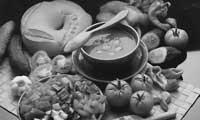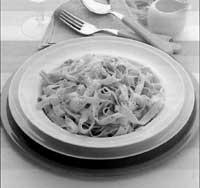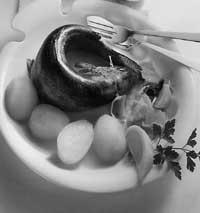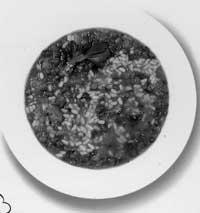Proteins: bricks from our house

The proteins involved in the basic structure of the cells of the body are constituted, in addition to carbon, hydrogen and oxygen, by nitrogen. On the other hand, some proteins may contain sulfur, phosphorus, iodine, iron, and other minerals.
These nutrients are essential for life and at certain times of life the need for proteins increases, for example in the time of growth, since proteins for our body are bricks for a house.


Protein molecules are very large and formed by small molecules called amino acids joined by peptide bonds. Each amino acid molecule is different, since its content in carbon, hydrogen, oxygen and nitrogen varies, according to this, when the different amino acids are combined, differentiating many types of proteins. Twenty-two different amino acids are known, of which fourteen can form in our body. They can be made from other amino acids that we take in the diet or other components derived from metabolism. Eight amino acids are not formed in our body.
The eight essential amino acids that we must obtain through the diet are: balina, lysine, threonine, leucine, isoleucine, tryptophan, phenylalanine and methionine. In childhood, in addition to these, histidine is essential. If all these essential amino acids are found in a protein, it is complete; for example, those found in egg, meat, stripe and milk. However, if only others are found, they are incomplete proteins.
Functions of proteins

The most important function of proteins is plastic, that is, to form structures of our body, bones, muscles, skin, hair, etc. For example, although hair loss is absolutely normal, every time this occurs the proteins that form your hair substitute begin to work. For this reason, in some stages of life greater amounts of protein are needed, as occurs in the time of growth.
They can also be energy producers in special circumstances, when carbohydrate and fat sources are exhausted as a result of intense exercise 4 kilocalories per gram of protein are released.
Among other functions, they also intervene in muscle contraction.
Protein Needs
An adult person needs 0.8 g/kg/day to replace the proteins he loses daily, which means between 12 and 15% of the energy that must be consumed throughout the day. These needs are aggravated in certain circumstances, for example, in the growth period the needs reach 2 g/kg, increasing 15 g/day during pregnancy and lactation.

There are special circumstances that require an exact amount of protein. Sometimes a greater number is needed, for example in operations or burns of different intensity (3-4 g/kg/day). In other cases we must reduce the amount, for example in kidney diseases (0.5-0.6 g/kg/day).
Protein Abuse Diseases

In developed countries it is not usual to find protein scarcity in people, because due to the high consumption of animal products, the protein needs of all are very covered, reaching abuses. Consequently, there are several diseases that affect us and the waste that is generated (urea, phenolic acid, etc.) if not properly removed can cause damage to the blood and nervous system.
They can also increase some diseases, such as osteoporosis, that facilitate the expulsion of calcium. Gout is known in our territory, it is also a rheumatic disease that occurs when uric acid that is formed as a result of the metabolism of certain proteins attaches to the joints.
Like other ingredients, proteins are foods that should be taken in moderation, as their consumption more or less can cause problems.
Protein sources
Those of animal origin offer a complete protein.

Milk and dairy products: in general, milk and yogurt contain between 3 and 5% protein. In the case of cheese, protein content can range from 5% to 30%, depending on fresh or cured cheese. The cooler the cheese, the more water, the more protein and the less nutrients it contains.
Meat, stripe and birds: like the rest of the animals, they contain whole proteins, although the amount varies according to the species of the animal, the age, the food with which it has been fed, etc. The average is 20-25%.
Vegetables
Fruit and vegetables: they have very few proteins, only 1-2% and are incomplete.

Legumes: they are very rich in protein (20-35%), but have little essential methionine amino acid. However, if combined with cereals, the type of protein obtained is similar to a fillet, such as lentils and rice.
Cereals: They contain between 7 and 11% of proteins, which are scarce in the amino acid of lysine, so, as already mentioned, mixing them with legumes, we will obtain complete proteins.
Nuts: They contain between 15% and 27% protein, nuts and seeds have an adequate distribution of the necessary amino acids.
Buletina
Bidali zure helbide elektronikoa eta jaso asteroko buletina zure sarrera-ontzian











